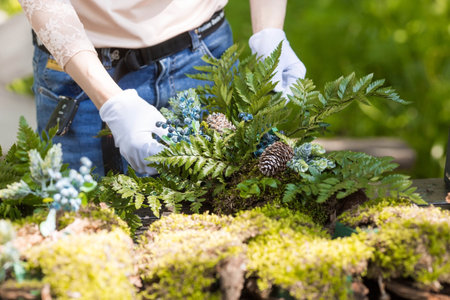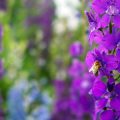Introduction to Low-Maintenance Landscaping
Low-maintenance landscaping is becoming increasingly popular among American homeowners looking for beautiful outdoor spaces without the hassle of constant upkeep. By choosing the right plants and design strategies, it’s possible to create yards that save time, conserve water, and require less frequent attention. This approach is not just about reducing chores—it’s also about making smart choices that fit your region’s climate, from the lush Pacific Northwest to the arid Southwest, ensuring your landscape thrives with minimal intervention. For busy families, retirees, or anyone eager to enjoy their yard instead of working in it every weekend, low-maintenance landscaping offers a sustainable and practical solution. Not only does it help conserve natural resources and lower utility bills, but it also supports local ecosystems by favoring native plants and eco-friendly materials. Whether you’re looking to cut back on mowing, simplify your flower beds, or reduce your water usage, these strategies are relevant for homeowners in every U.S. climate zone.
2. Understanding U.S. Climate Zones
When it comes to low-maintenance landscaping, understanding your region’s unique climate is essential. The United States Department of Agriculture (USDA) has divided the country into several hardiness zones based on average annual minimum temperatures. These zones help gardeners and homeowners choose plants that will thrive with minimal care, ensuring both sustainability and year-round beauty.
What Are USDA Climate Zones?
The USDA Plant Hardiness Zone Map divides the U.S. into 13 primary zones, ranging from Zone 1 (coldest) to Zone 13 (warmest), with each zone representing a 10°F difference in minimum temperatures. By knowing your zone, you can select plants best suited for your area’s conditions—reducing the need for extra watering, fertilizing, or winter protection.
Why Zone Knowledge Matters
Choosing plants adapted to your climate means less effort and fewer resources required for upkeep. For example, drought-tolerant species work well in arid Southwestern zones, while hardy evergreens are ideal for colder Northern areas. This approach not only saves time and money but also supports local ecosystems.
Quick Reference: Major USDA Zones Across the U.S.
| Zone | Region | Temperature Range (°F) |
|---|---|---|
| 1-3 | Northernmost states (Alaska, parts of Montana) | -60 to -30 |
| 4-6 | Northern Midwest & Northeast | -30 to 0 |
| 7-8 | Piedmont, Mid-Atlantic, Pacific Northwest | 0 to 20 |
| 9-10 | Southeast, Southern California, Gulf Coast | 20 to 40 |
| 11-13 | Southern Florida, Southern Texas, Hawaii | 40 and above |
Understanding your USDA climate zone is the first step toward creating a beautiful landscape that practically takes care of itself. With this knowledge, you’ll be able to make smart plant selections tailored to your environment—laying the foundation for a low-maintenance outdoor space no matter where you live in the U.S.
![]()
3. Plant Selection for Every Zone
Choosing the right plants is key to achieving a truly low-maintenance landscape, especially when considering the wide range of U.S. climate zones. Selecting native and climate-adapted species not only ensures long-term success but also minimizes the need for extra watering, fertilizing, and pest control.
Native Grasses: A Smart Foundation
In cooler northern regions (Zones 3-5), consider hardy ornamental grasses like Little Bluestem or Switchgrass. These grasses require little maintenance once established and add year-round texture. In warmer southern areas (Zones 7-10), Muhly Grass and Gulf Coast Muhly are top picks—they’re drought-tolerant and thrive with minimal care.
Easy-Care Shrubs for Structure
Shrubs provide structure and year-round interest with very little upkeep. For the Northeast and Midwest, try Boxwood or Inkberry Holly, both of which withstand cold winters. In the Southwest, opt for Texas Sage or Dwarf Yaupon Holly, which handle heat and dry spells beautifully.
Flowering Favorites by Region
If you love color, focus on perennials that suit your zone. Black-Eyed Susans and Coneflowers flourish in the central U.S., while Blanket Flower and Salvia are great for arid western landscapes. In humid southeastern states, Daylilies and Coreopsis shine thanks to their tolerance for both heat and rain.
Tree Choices That Go the Distance
Finally, low-maintenance trees can anchor your landscape for decades. Red Maple and Serviceberry are excellent for colder zones; Crepe Myrtle thrives in southern gardens; and Desert Willow works wonders in dry western yards. Always check with your local extension office or nursery to confirm which varieties are best adapted to your specific climate zone.
4. Water-Wise Solutions and Irrigation Tips
Water conservation is a key factor in creating low-maintenance landscapes that thrive across the diverse climate zones of the United States. Drought-tolerant landscaping—often called xeriscaping—prioritizes plants and techniques that require minimal supplemental watering. These strategies not only save time and money but also support sustainability in regions facing water restrictions or unpredictable rainfall.
Xeriscaping: Landscaping for Dry Conditions
Xeriscaping is more than just planting cacti; it’s about designing your yard with water efficiency in mind, regardless of whether you’re in the arid Southwest, humid Southeast, or anywhere in between. Consider using native grasses, succulents, and perennials suited to your local conditions. Mulching and grouping plants by their water needs further reduces maintenance while keeping your landscape looking vibrant.
Benefits of Drought-Tolerant Plants
| Region | Recommended Plant Types | Watering Frequency |
|---|---|---|
| Southwest (Hot & Arid) | Cacti, Agave, Yucca | Monthly or less |
| Southeast (Humid & Warm) | Lantana, Salvia, Coreopsis | Weekly (rainfall dependent) |
| Northeast (Cool & Humid) | Daylilies, Sedum, Coneflower | Weekly to biweekly |
| Midwest (Temperate) | Purple Prairie Clover, Black-eyed Susan | Biweekly |
Irrigation Methods That Minimize Effort
Efficient irrigation is crucial for reducing water use and maintenance. Drip irrigation systems deliver water directly to plant roots, minimizing waste from evaporation or runoff. Soaker hoses are another low-tech option ideal for garden beds. For lawns, consider smart sprinkler controllers that adjust based on weather forecasts and soil moisture levels.
Quick Tips for Efficient Water Use:
- Water early in the morning or late in the evening to reduce evaporation.
- Use mulch to retain soil moisture and keep roots cool.
- Group plants with similar water needs together.
By adopting these water-wise solutions and irrigation tips, homeowners can maintain beautiful landscapes with less effort and environmental impact, no matter their U.S. climate zone.
5. Mulching and Ground Cover Alternatives
Maintaining a beautiful yard doesn’t have to mean endless mowing or constant weeding. Mulching and choosing the right ground covers are smart, low-maintenance strategies that work in every U.S. climate zone.
Easy-Care Ground Covers
If you’re tired of traditional lawns, consider ground cover plants that thrive with little attention. In warmer regions, creeping thyme, liriope, or asiatic jasmine spread quickly and crowd out weeds. For cooler climates, sweet woodruff, vinca minor, or native sedges offer lush greenery without fuss. These options require far less watering and mowing than turfgrass.
Smart Mulching Techniques
Mulch is more than just decoration—it’s a practical way to reduce weeds, retain moisture, and insulate plant roots from temperature extremes. Use shredded bark or hardwood mulch for flower beds and around trees, which breaks down slowly and enriches the soil. In drier climates, try gravel or decomposed granite for a crisp look that minimizes water evaporation and discourages weed growth.
Turfgrass Alternatives
If you want to ditch the lawnmower altogether, there are plenty of alternatives to traditional turfgrass that suit every U.S. region. Consider clover lawns, which stay green through droughts and need little mowing, or buffalograss, a native prairie grass perfect for Midwest and Western states. In shady spots, moss gardens provide a soft, low-growing carpet that’s virtually maintenance-free.
Tips for Success
No matter where you live, choose materials and plants adapted to your local conditions for the best results. Lay down a thick layer of mulch (2–4 inches) each spring to suppress weeds and lock in moisture. When selecting ground covers, group plants with similar water needs together to simplify care even further.
By swapping high-maintenance lawns for mulched beds and hardy ground covers, you’ll enjoy a good-looking landscape with much less effort—no matter what your local climate throws your way.
6. Hardscaping Elements for Effortless Yards
When it comes to low-maintenance landscaping across the diverse U.S. climate zones, hardscaping features are your best friends. Incorporating patios, stone pathways, gravel beds, and other non-living elements can dramatically reduce yard work while boosting your outdoor space’s functionality and appeal.
Patios: The Foundation of Easy Outdoor Living
A well-designed patio not only provides a great area for entertaining or relaxing but also cuts down on grass and garden beds that require regular care. Materials like concrete pavers, brick, or natural stone are durable and withstand all types of weather from the humid South to snowy Northern states. Choose neutral tones for a timeless look that fits any regional style.
Stone Pathways: Practical and Picturesque
Stone or flagstone pathways create attractive walkways through your yard, connecting areas without requiring mowing or edging. They’re especially popular in Western drought-prone zones because they allow water to drain easily and don’t compete with thirsty plants. Fill gaps with gravel, groundcovers, or even mulch for added texture and minimal maintenance.
Gravel Beds: Versatile and Water-Wise
Gravel is a go-to choice in arid regions but works nationwide as an alternative to turf or flower beds. It suppresses weeds, improves drainage, and never needs watering. Use pea gravel for pathways or larger river rocks for accent borders. Plus, it pairs perfectly with native plants and succulents for a modern American landscape vibe.
Other Hardscaping Features to Consider
Consider raised beds built from stone or wood for contained planting areas—these reduce weeding and make gardening more accessible. Install retaining walls on sloped properties to prevent erosion and simplify mowing tasks. Decorative boulders and benches offer instant visual interest with zero upkeep required.
Hardscaping Across Climate Zones
No matter if you’re in the sun-baked Southwest, lush Pacific Northwest, chilly Northeast, or humid Southeast, hardscaping adapts effortlessly to every climate zone. By blending these elements into your landscape design, you’ll enjoy a beautiful yard that’s easy to maintain year-round—leaving more time for barbecues, backyard games, and relaxation.
7. Seasonal Maintenance Checklist
Keeping your low-maintenance landscape thriving year-round doesn’t mean you can skip all upkeep. A simple, zone-specific seasonal checklist ensures your yard always looks its best with minimal effort. Here are some annual responsibilities tailored to different U.S. climate zones:
Spring Tasks
- Northern Zones: Prune back perennials, remove winter mulch, and check for frost damage.
- Southern Zones: Refresh mulch, trim any cold-damaged plants, and fertilize lawns early before summer heat arrives.
Summer Chores
- All Zones: Regularly weed and deadhead flowers to encourage new blooms.
- Arid/Western Zones: Monitor irrigation systems for efficiency, and adjust timers as rainfall changes.
Fall Preparation
- Northern & Mountain Zones: Cut back spent plants, plant spring bulbs, rake leaves, and protect delicate shrubs from cold snaps.
- Southeastern Zones: Aerate and overseed lawns if needed; prepare beds for winter with a fresh layer of mulch.
Winter Watchlist
- Mild/Warm Climates: Continue to water during dry spells and protect young plants from occasional frost.
- Colder Regions: Check for ice damage, brush heavy snow off shrubs, and plan next season’s improvements.
Pro Tips for Every Zone
- Create a digital reminder or printable checklist at the start of each season to stay on track.
- Select native or adapted plants that require little intervention after establishment.
With these straightforward, region-specific tasks, you’ll enjoy a beautiful landscape without constant work—no matter where you live in the U.S.

